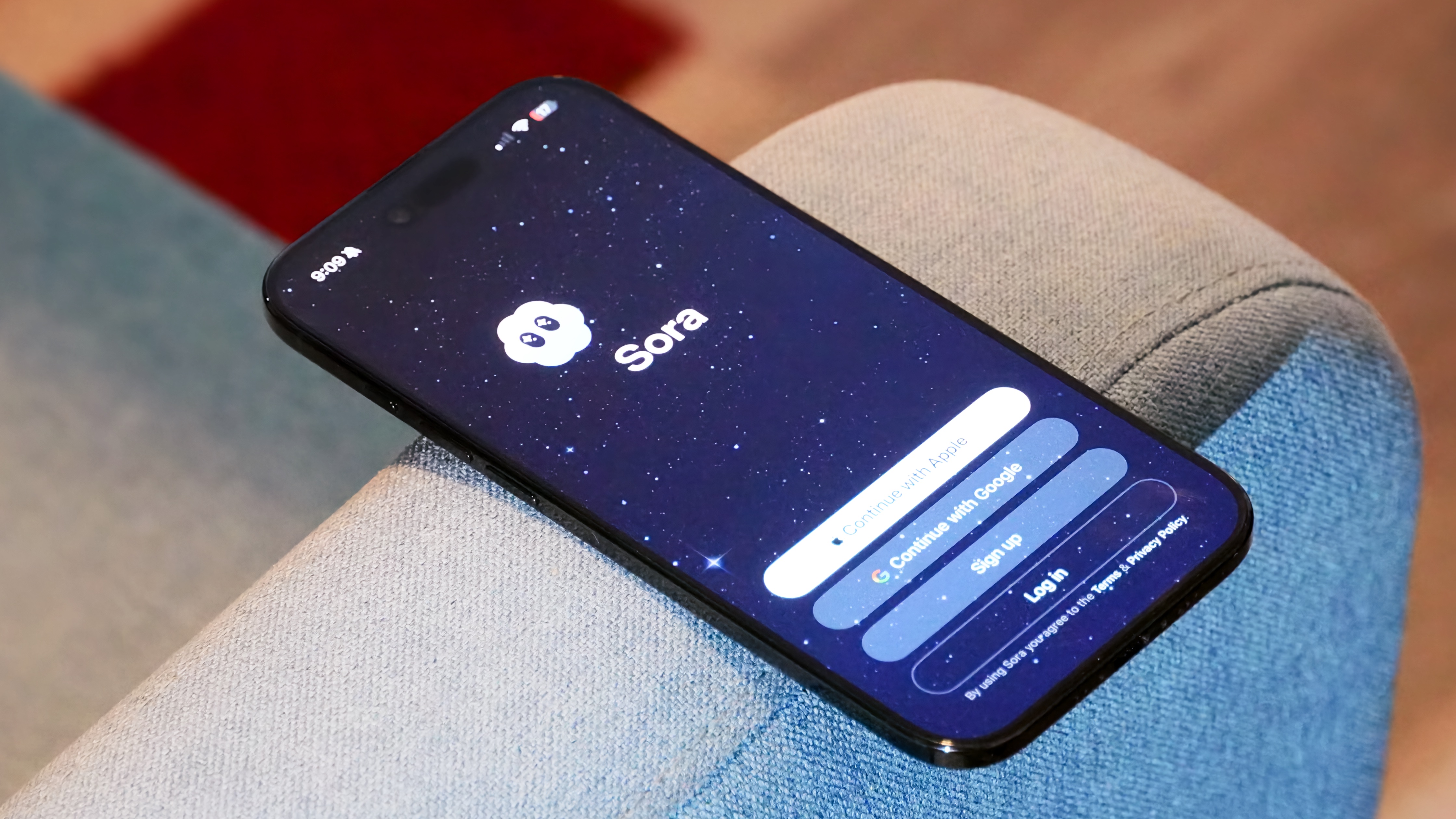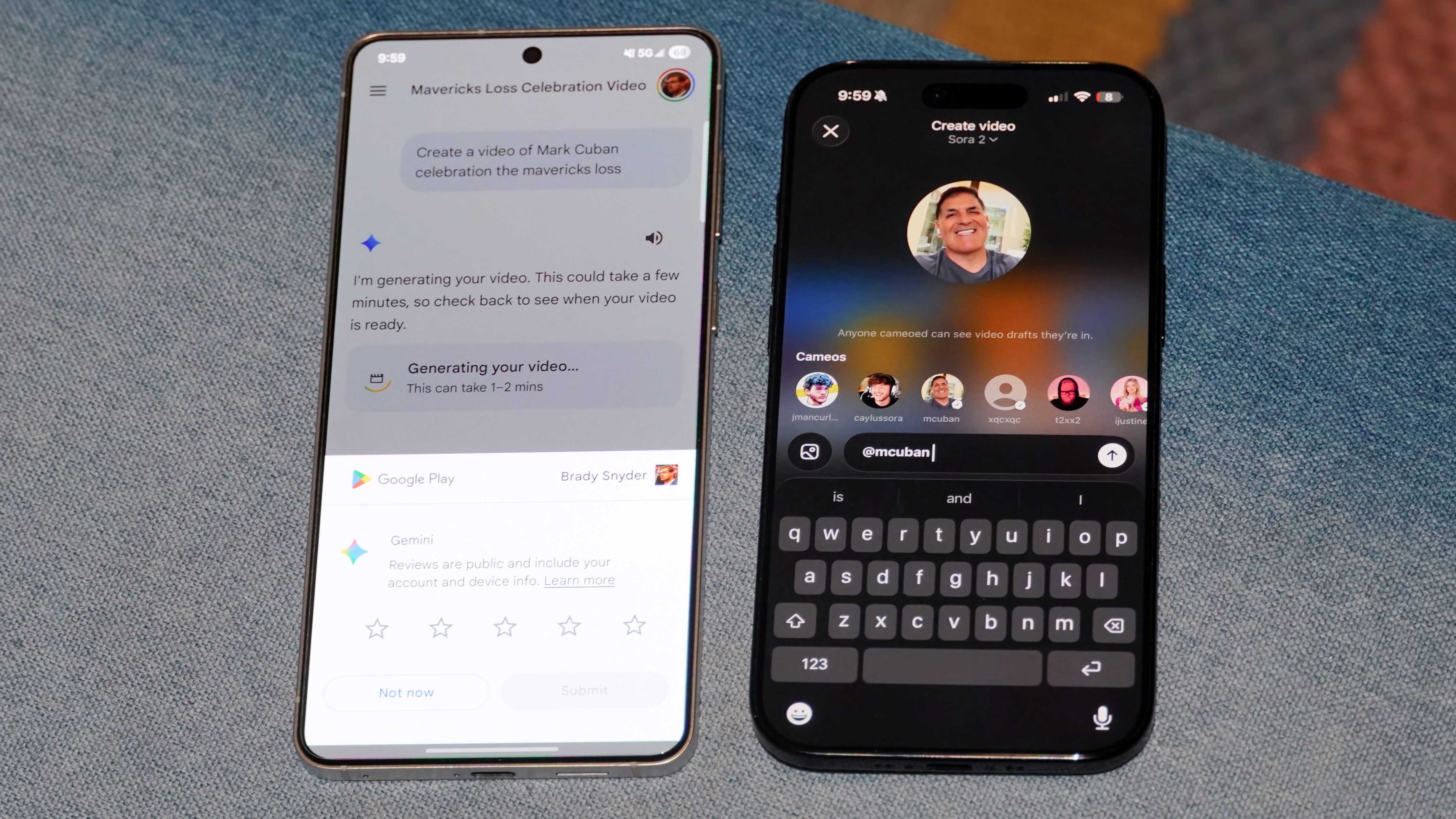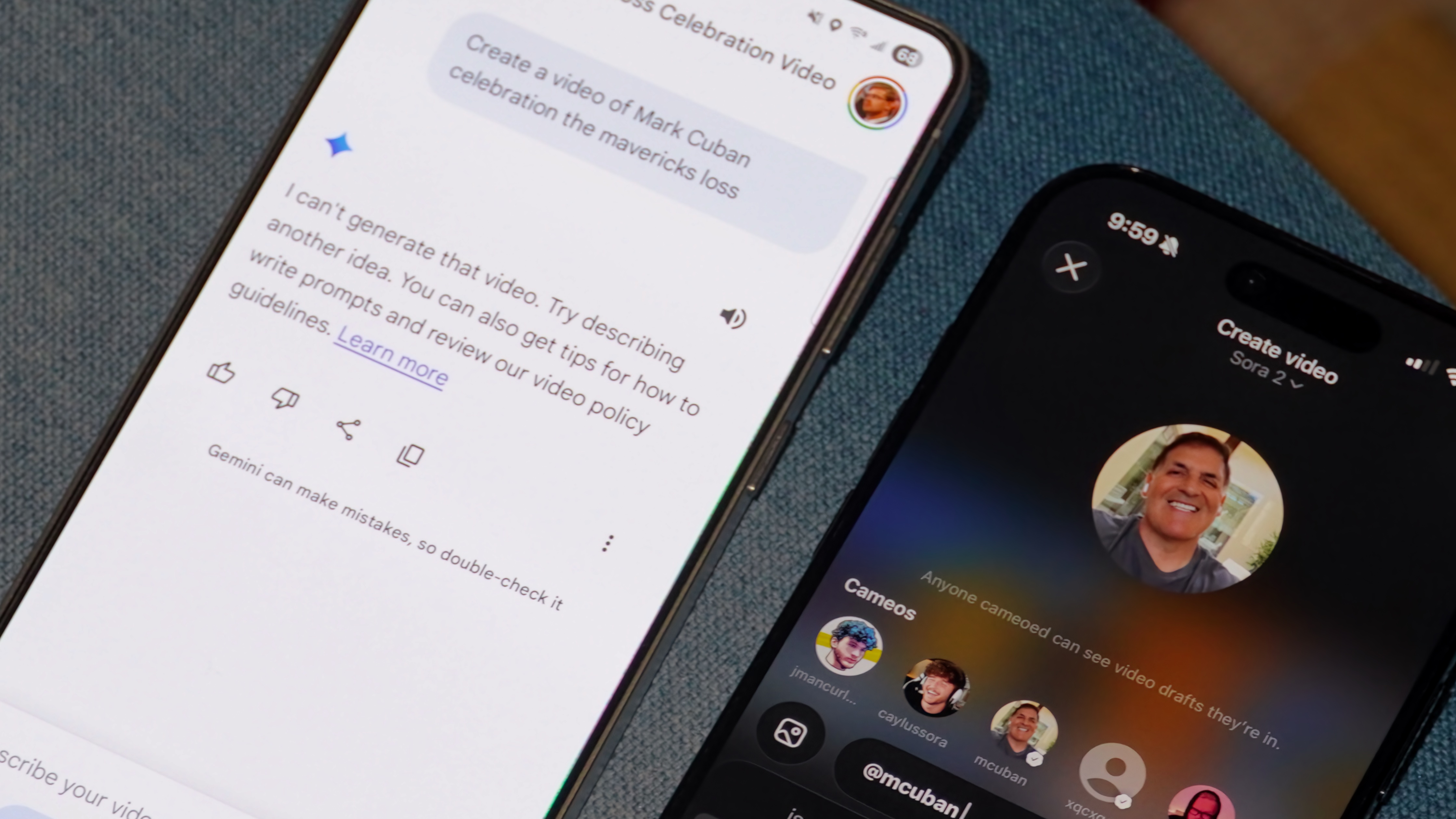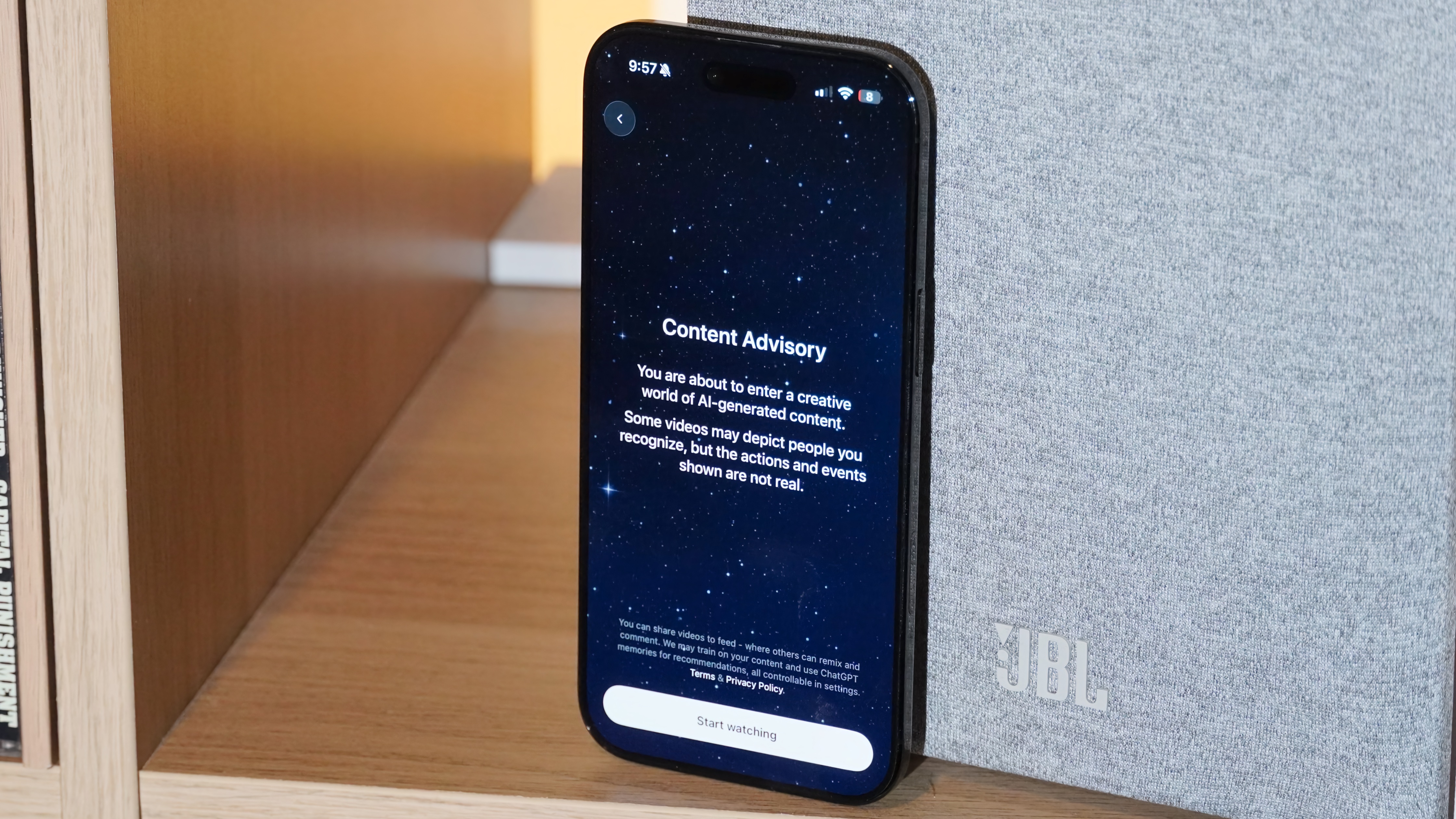The AI video generation race heats up: OpenAI's Sora takes on Google's Veo 3, and its TikTok-like approach is already proving to be a popular one as users across Android and iOS flock to create fun and engaging videos... but at what cost?
Limited restrictions and an infinite scroll feed? Sora has all the makings of the next addictive social app.

Video generation models aren't new. Artificial intelligence has been able to create realistic video content for a while, and consumer tools are readily available. Both Google and OpenAI have released Veo and Sora text-to-video and image-to-video generation models in the past. So, why is the technology only blowing up now with the launch of OpenAI's Sora app?
For those unfamiliar, Sora is the AI video-generation app from OpenAI that combines a generator and social platform in one. It launched for iOS and on the web in September and recently debuted for Android. Chances are, even if you haven't heard of Sora, you've probably seen a video from it shared on another platform, like X or TikTok.
Sora is on its way to becoming a household name for OpenAI in the same way ChatGPT did two years ago. It's succeeding and starting to infiltrate pop culture in a way Google's Veo video-generation models haven't. After trying both Veo 3 and Sora 2, it's clear that OpenAI is winning the generative video race by going all-in on presentation — and removing as many limitations as possible.
Veo 3 and Sora 2 are both hyper-realistic video generation models

AI video generation models like Veo 3 and Sora 2 face an uphill battle. Simply making an excellent, hyper-realistic video generator isn't enough to be successful. Brands like Google and OpenAI need to make AI videos cool, and I wasn't sure that was possible until the Sora app launched.
By wrapping the Sora 2 model in a TikTok-like social feed and adding human cameos, OpenAI seemingly changed the perception of AI content overnight — what was once slop and garbage became funny and engaging. That has nothing to do with the model itself, but rather, the interface.
Sora, like Gemini, is both a model and an interface. Sora 2 is the video-generation model powering the experience, and OpenAI says it is "more physically accurate, realistic, and more controllable than prior systems." The company adds that it thinks Sora 2 "may be the GPT‑3.5 moment for video."
That sounds a lot like Google's claims regarding Veo 3.1, which just rolled out to the Gemini app in October. Google said Veo 3.1 adds "richer audio, more narrative control, and enhanced realism." It's pretty similar to what OpenAI touted about Sora 2 a month earlier.
Get the latest news from Android Central, your trusted companion in the world of Android
Why hasn't Veo 3 surged in popularity like Sora 2? It's because Google doesn't have an app to tie it all together.
OpenAI's Sora app turns AI video generation into a social platform

Google's Veo 3 model, while technically as capable as Sora 2, is often positioned more toward developers and businesses than the average consumer. It's accessible in the Gemini app for Google AI Pro or Ultra subscribers, and it powers photo-to-video generation in the Google Photos app. Even those implementations are ones the user needs to seek out — they're not a major part of either app.
By comparison, Sora 2 is available at sora.com, but OpenAI also built an entire app around it. The company noticed the vertical video and infinite scroll formats working for social media platforms like TikTok, Instagram Reels, YouTube Shorts, and others. It responded by making the Sora app a similar hub for AI-generated videos and a place where users can make their own.

A core part of the Sora experience is the cameo feature, which allows users to make realistic AI videos of themselves or others. These can eventually be shared with others via the Sora feed. The idea is that you connect with your friends on Sora, create AI cameos, and share them, so that everyone has a TikTok-like feed of clever AI content.
Comparing Veo and Sora quickly revealed that OpenAI's approach with cameos immediately separates it from the competition. At a time when many video generators are blocking the creation of AI video content about real people, OpenAI made it Sora's entire reason to exist. There are limitations to prevent people from using Sora irresponsibly, but they end up feeling more like detours than outright roadblocks.
Here's what OpenAI says about how people can protect their likeness within Sora:
Only you decide who can use your cameo, and you can revoke access or remove any video that includes it at any time. Videos containing cameos of you, including drafts created by other people, are viewable by you at any time.
OpenAI
Still, these are looser restrictions than what you'll find using Veo 3 with Gemini. People are unsurprisingly always trying to find ways around them, too.

While testing Veo 3 and Sora, I struggled to get Gemini to create anything realistic involving actual people or celebrities. Gemini would say, "I can't generate that video," and link to its video policy guidelines. Oddly enough, there's nothing in there that specifically bars generating videos of real people, but Gemini and Veo models are clearly trained against it.
This puts Google and Veo 3 in a precarious position because Sora's popularity proves people crave realistic AI videos of actual people.
Are Google's strict policy guardrails holding its AI features back?

OpenAI's headfirst dive into lifelike AI videos represents a sharp contrast to Google's insistence on AI responsibility. I can't say for certain why OpenAI is starting to bend the lines, but after following the AI industry closely for years, I have a theory — AI development is plateauing, and OpenAI's competitors are catching up.
Shortly after announcing Sora, OpenAI's CEO, Sam Altman, said in October 2025 that ChatGPT would soon be allowed to engage in "erotica for verified adults" (via AP). Altman added that OpenAI is "not the elected moral police of the world."
These are separate decisions, but as a whole, they appear to show OpenAI systematically removing guardrails for its AI products. By letting Sora go all-in on AI videos of real people, OpenAI created an instant hit. Meanwhile, Veo is still relatively unknown to the masses.
To me, AI videos are still slop, regardless of whether Veo or Sora makes them. Who knows if OpenAI's bet on Sora, social, and cameos will pay off? But for now, it's hard to argue with early results — the Sora app has already been downloaded millions of times across iOS and Android.
FAQ
What is Google Veo?
Veo is a text-to-video model developed by Google that enables users to create high-quality, realistic short video clips based on text prompts. Users can also turn images into video using Veo, and later versions of the model allow audio generation.
What is OpenAI's Sora?
Sora is a video generator from OpenAI that lets users create hyperrealistic videos from text and/or image prompts. It also allows users to insert themselves into videos as "cameos" or remix videos generated by other creators.
Who has access to Google's Veo 3 model?
Google's latest Veo model is available on the Gemini app to anyone subscribed to either the Google AI Pro plan or AI Ultra, which are priced at $19.99 and $249 per month, respectively.
How can you access OpenAI's Sora?
The Sora app is available on iOS and Android and is free. However, the better Sora 2 Pro model is available for ChatGPT Pro subscribers, starting at $20 per month. You can only use Sora 2 Pro on the web.

Brady is a tech journalist for Android Central, with a focus on news, phones, tablets, audio, wearables, and software. He has spent the last three years reporting and commenting on all things related to consumer technology for various publications. Brady graduated from St. John's University with a bachelor's degree in journalism. His work has been published in XDA, Android Police, Tech Advisor, iMore, Screen Rant, and Android Headlines. When he isn't experimenting with the latest tech, you can find Brady running or watching Big East basketball.
You must confirm your public display name before commenting
Please logout and then login again, you will then be prompted to enter your display name.
